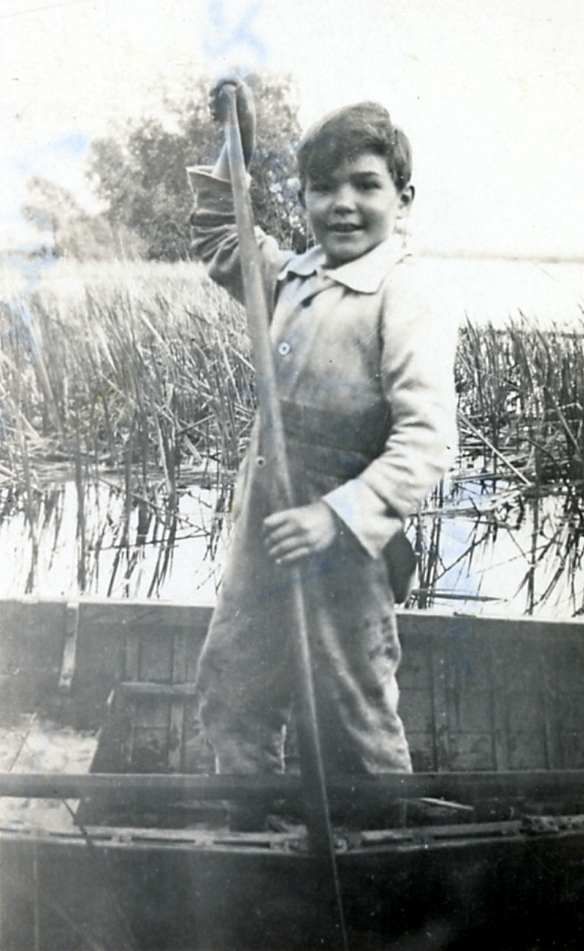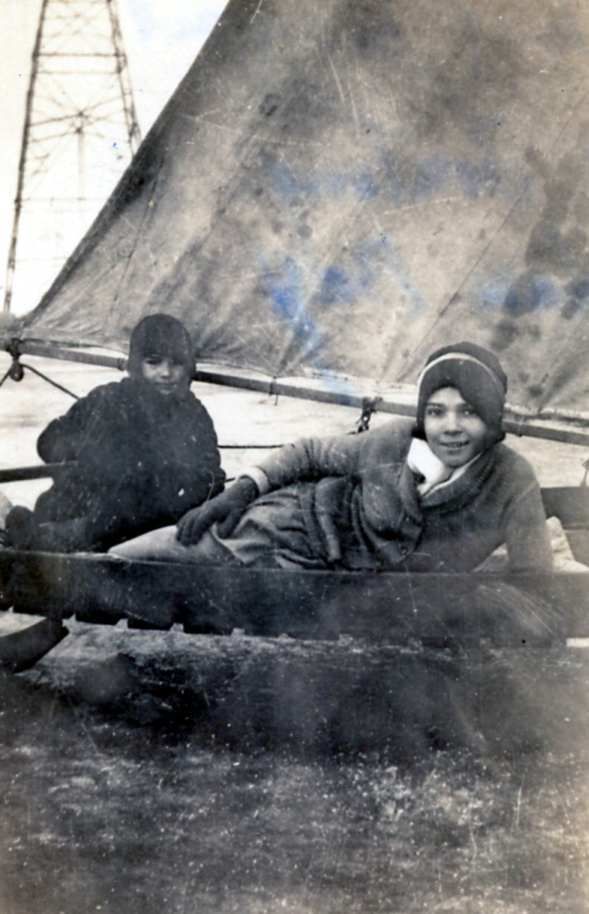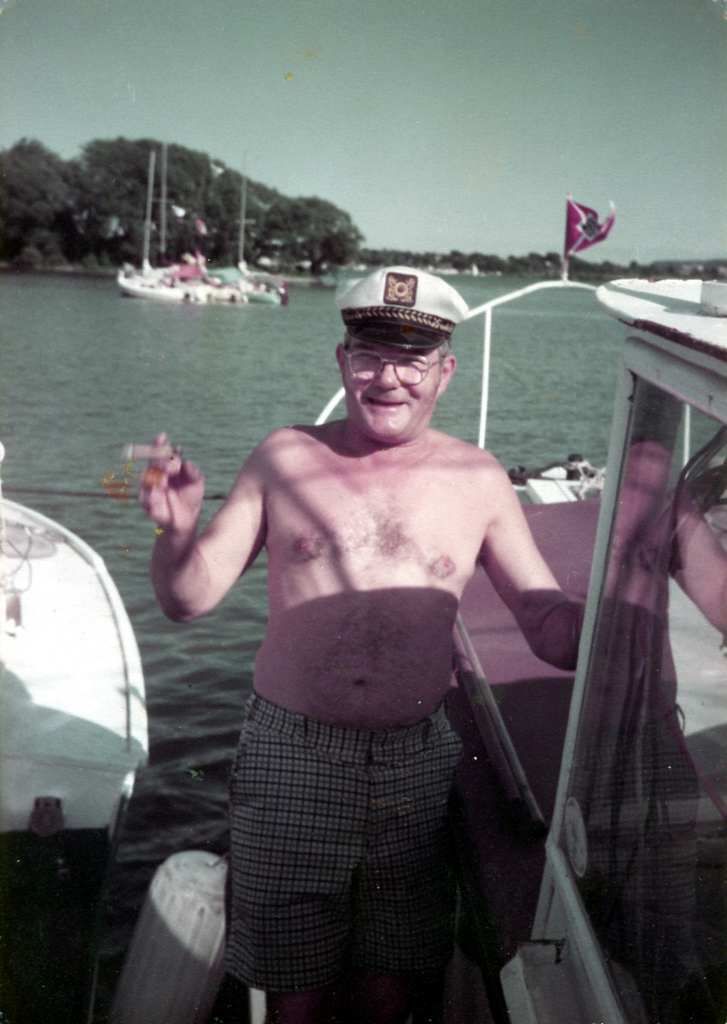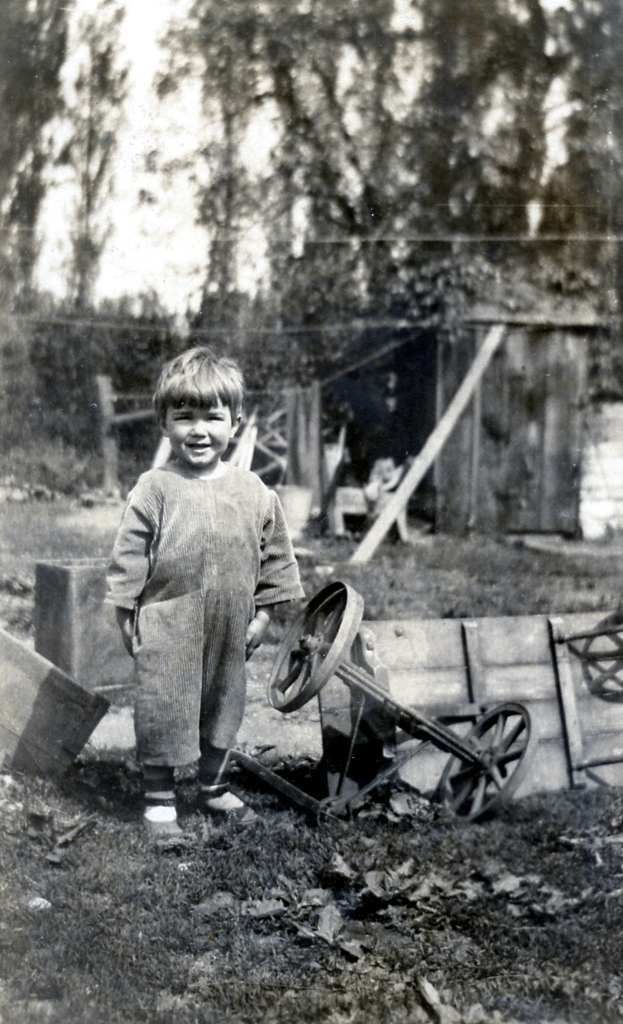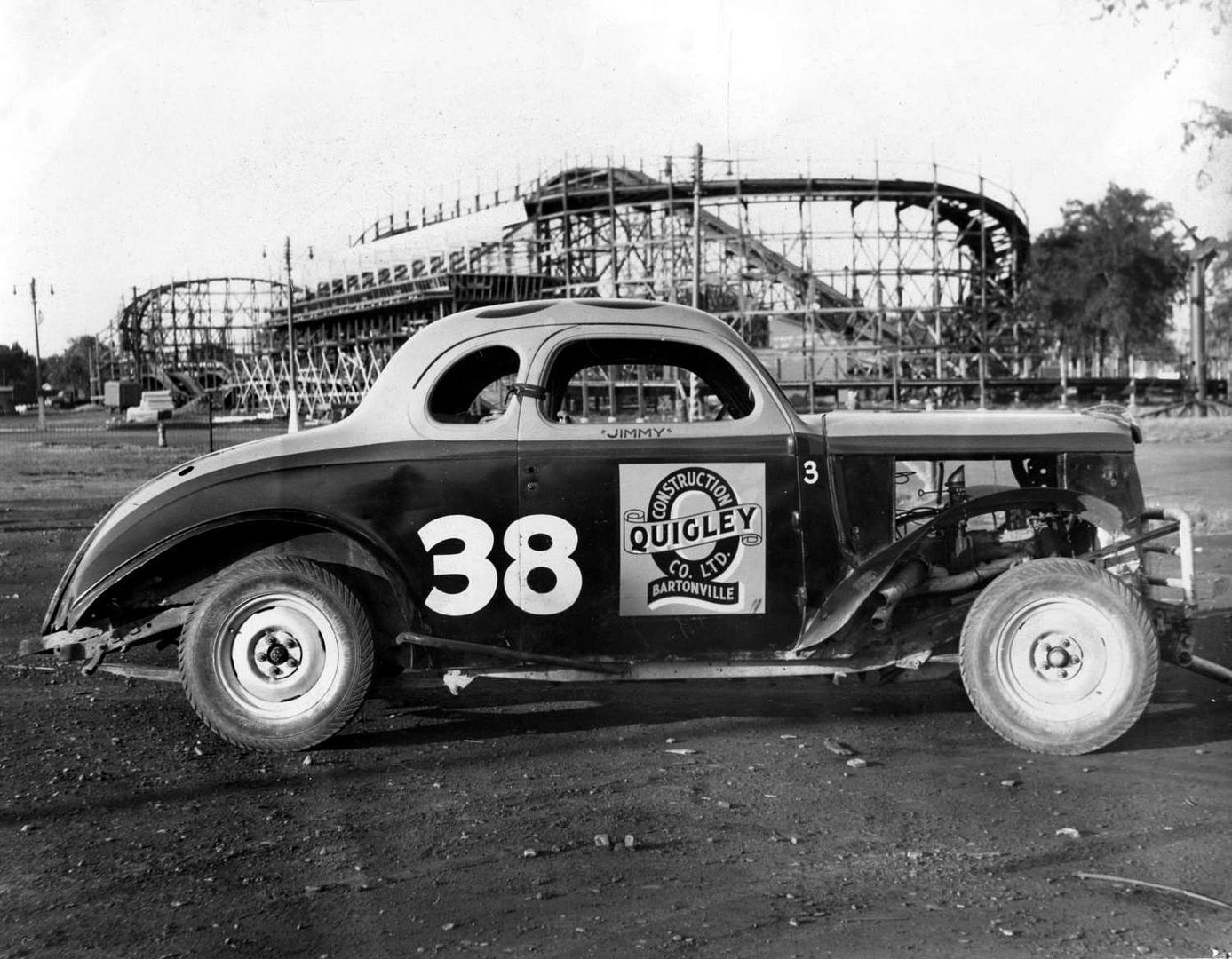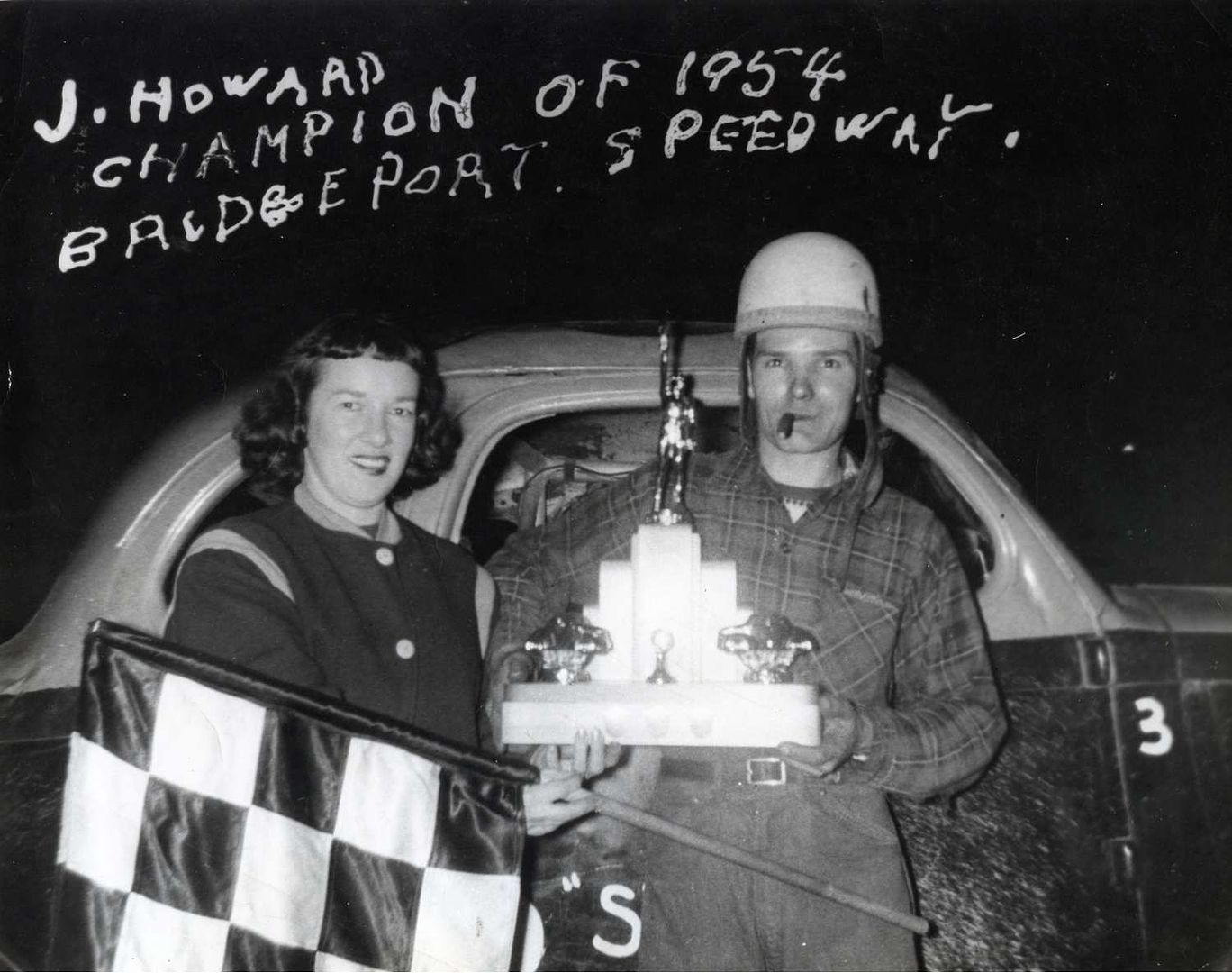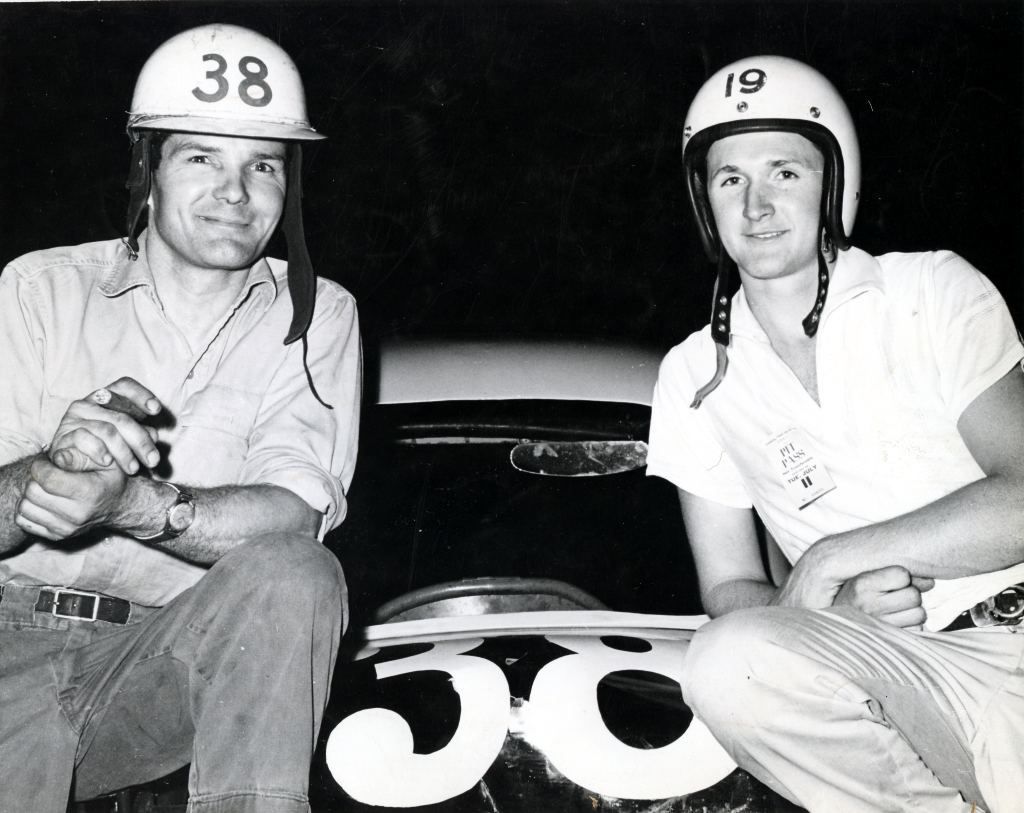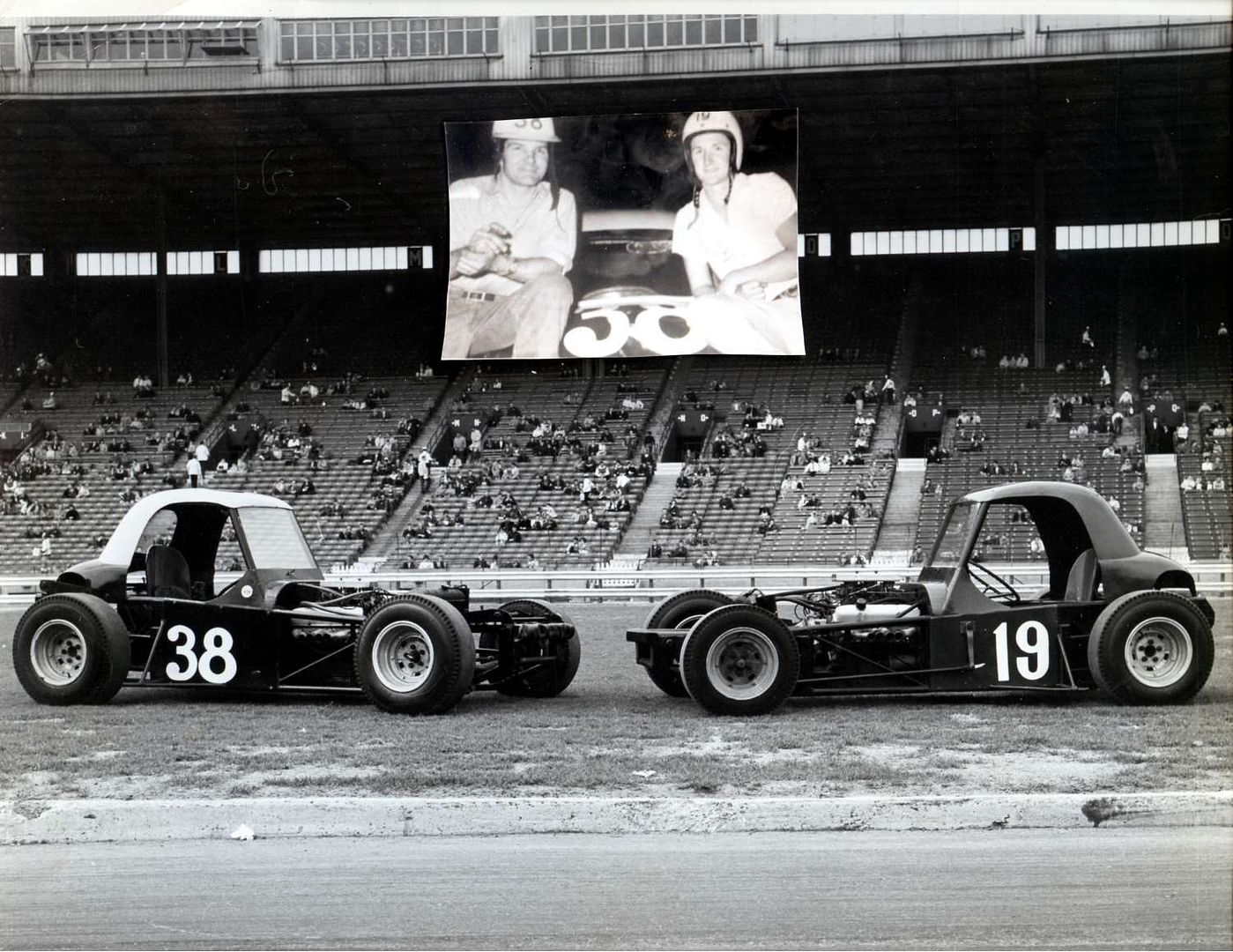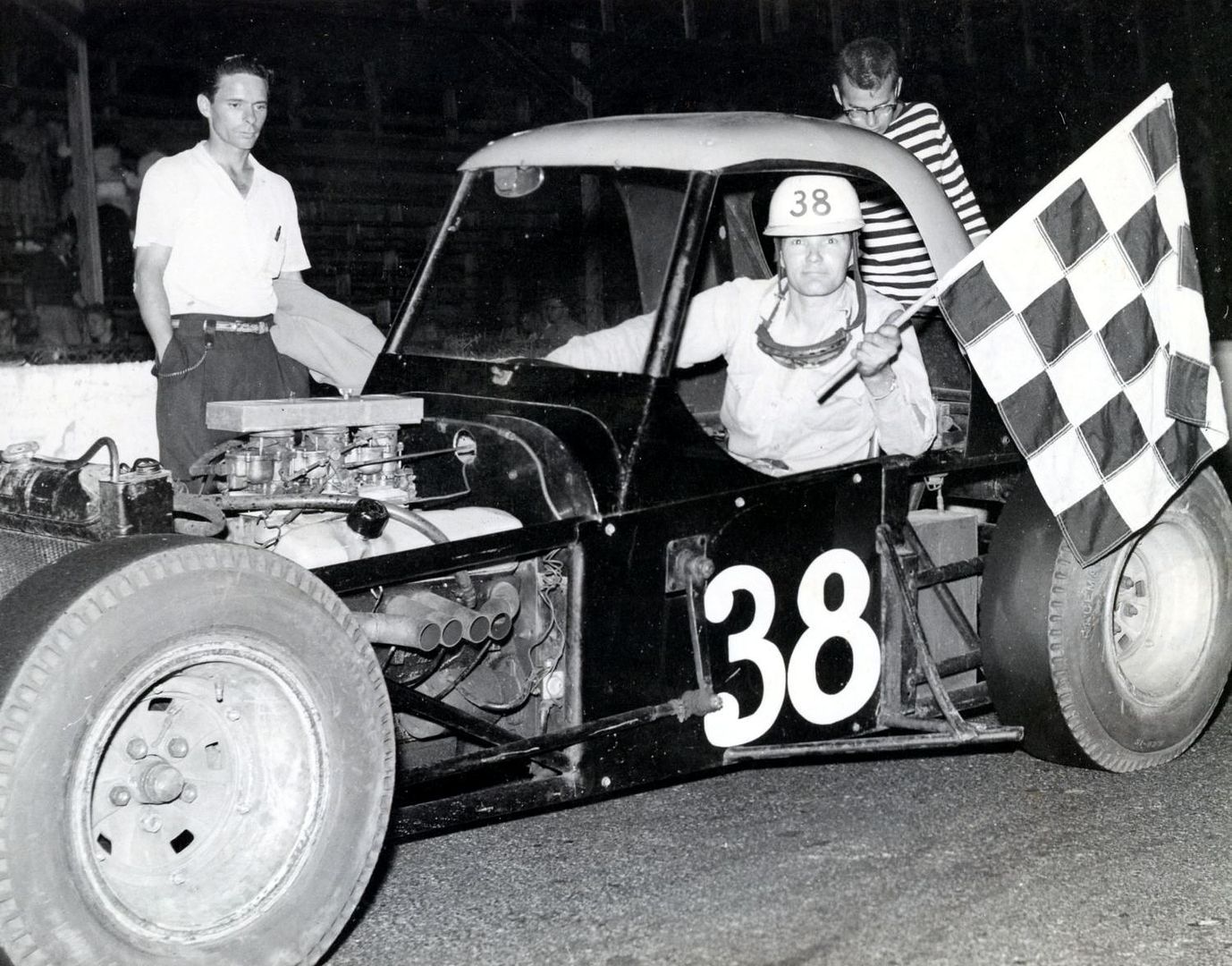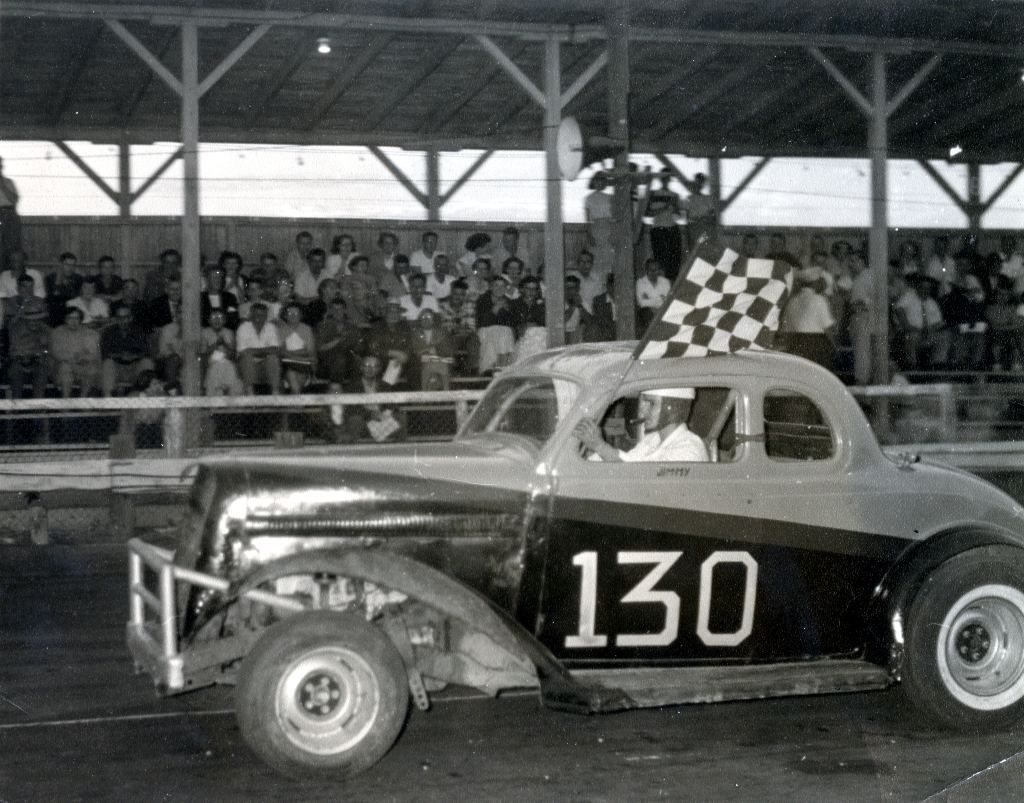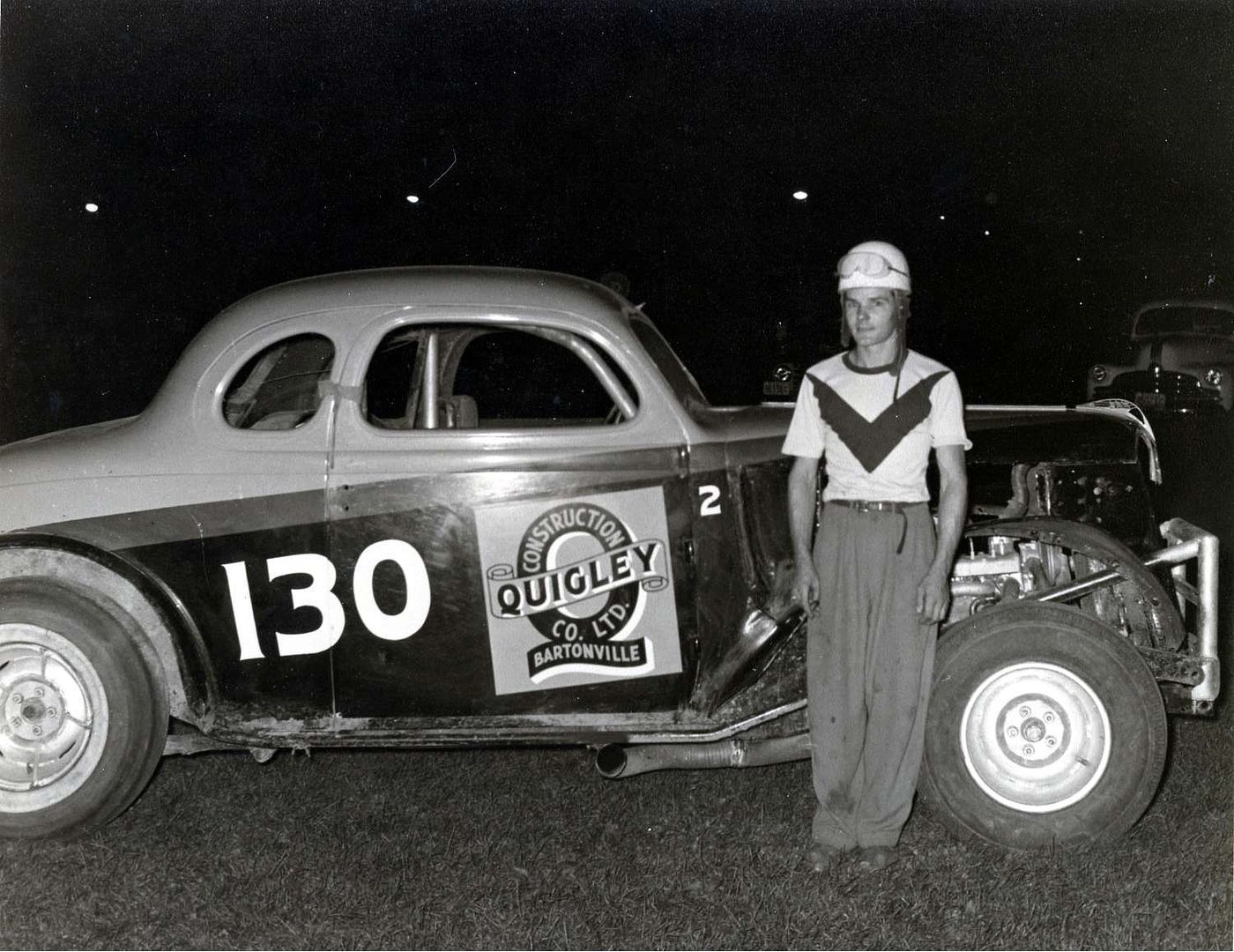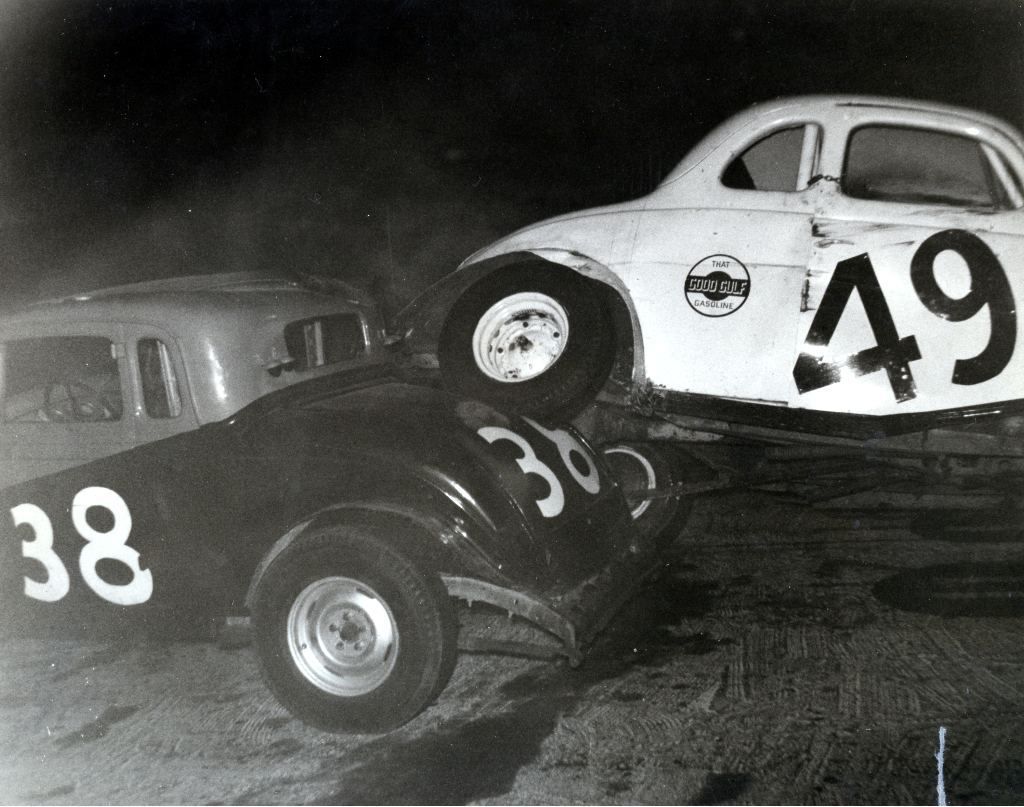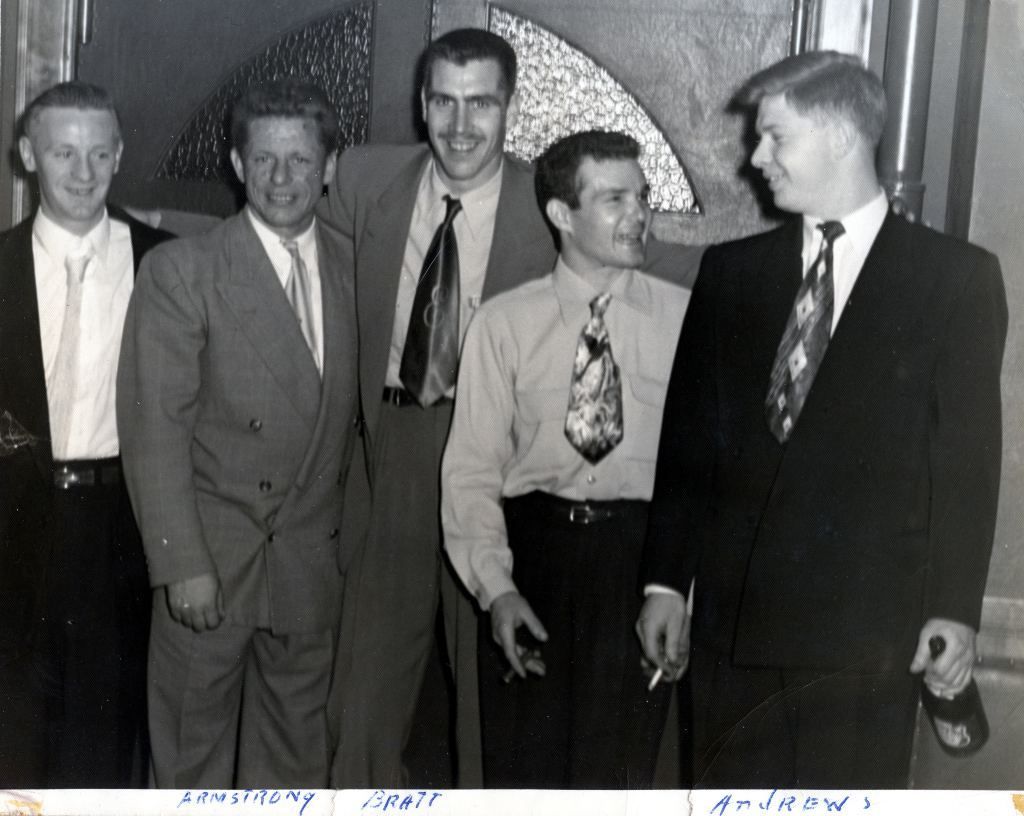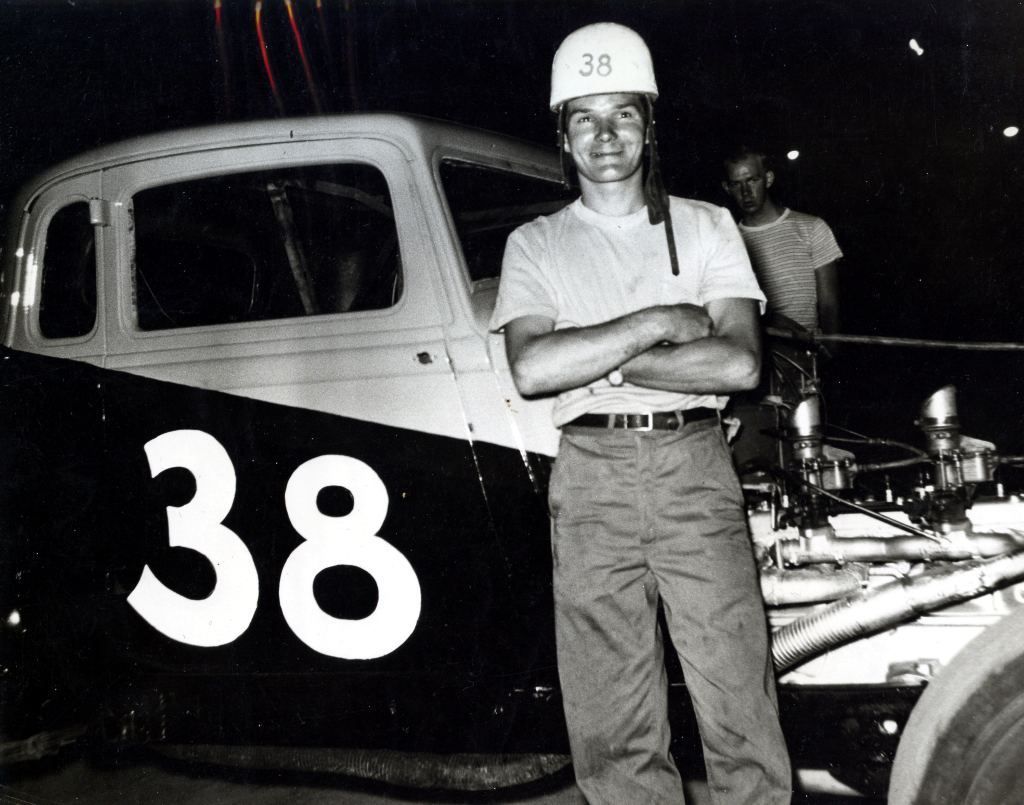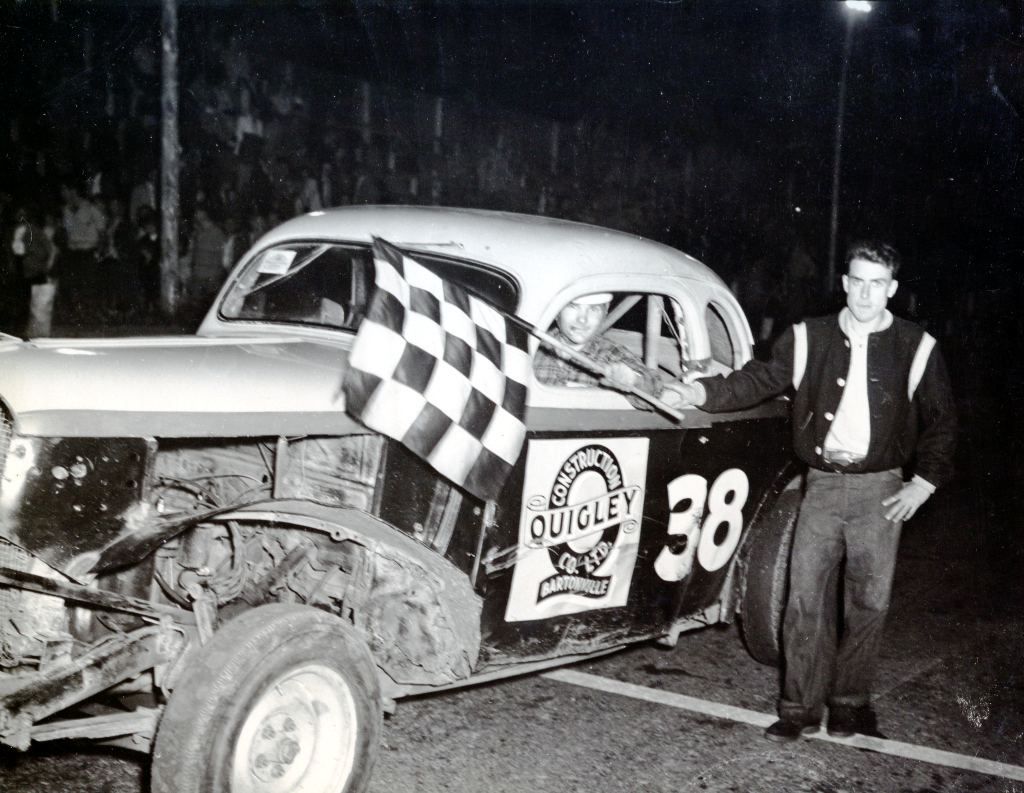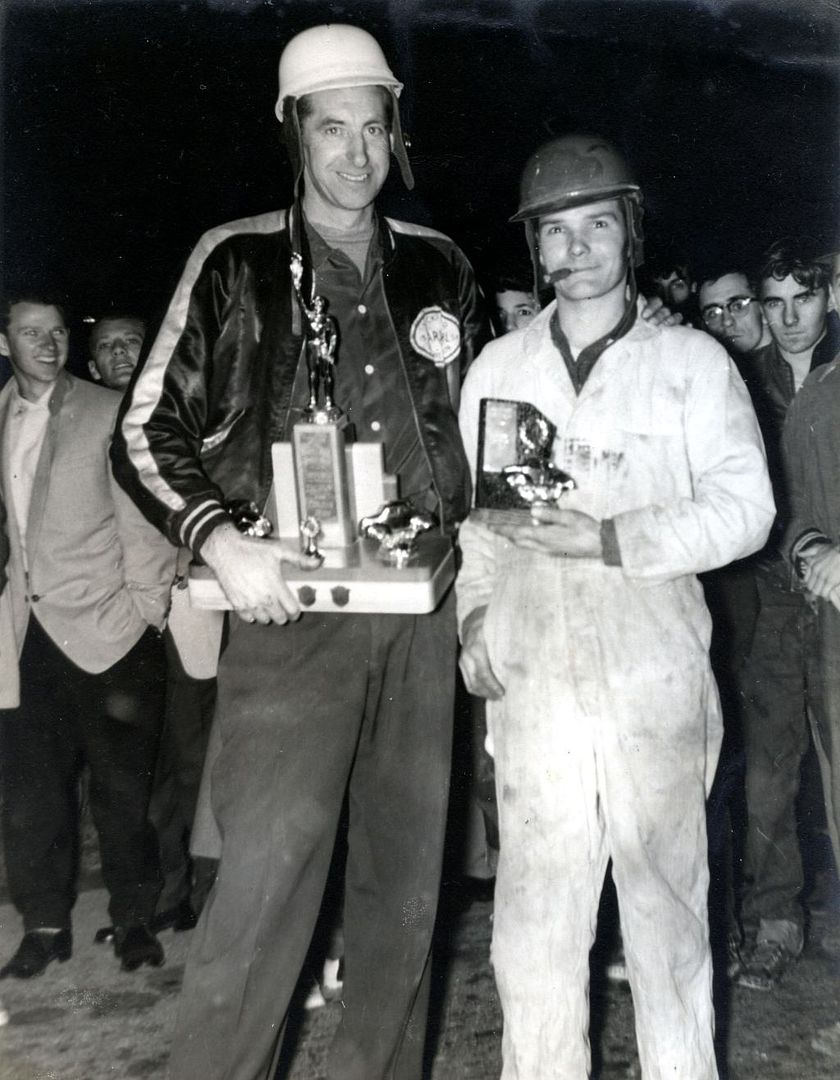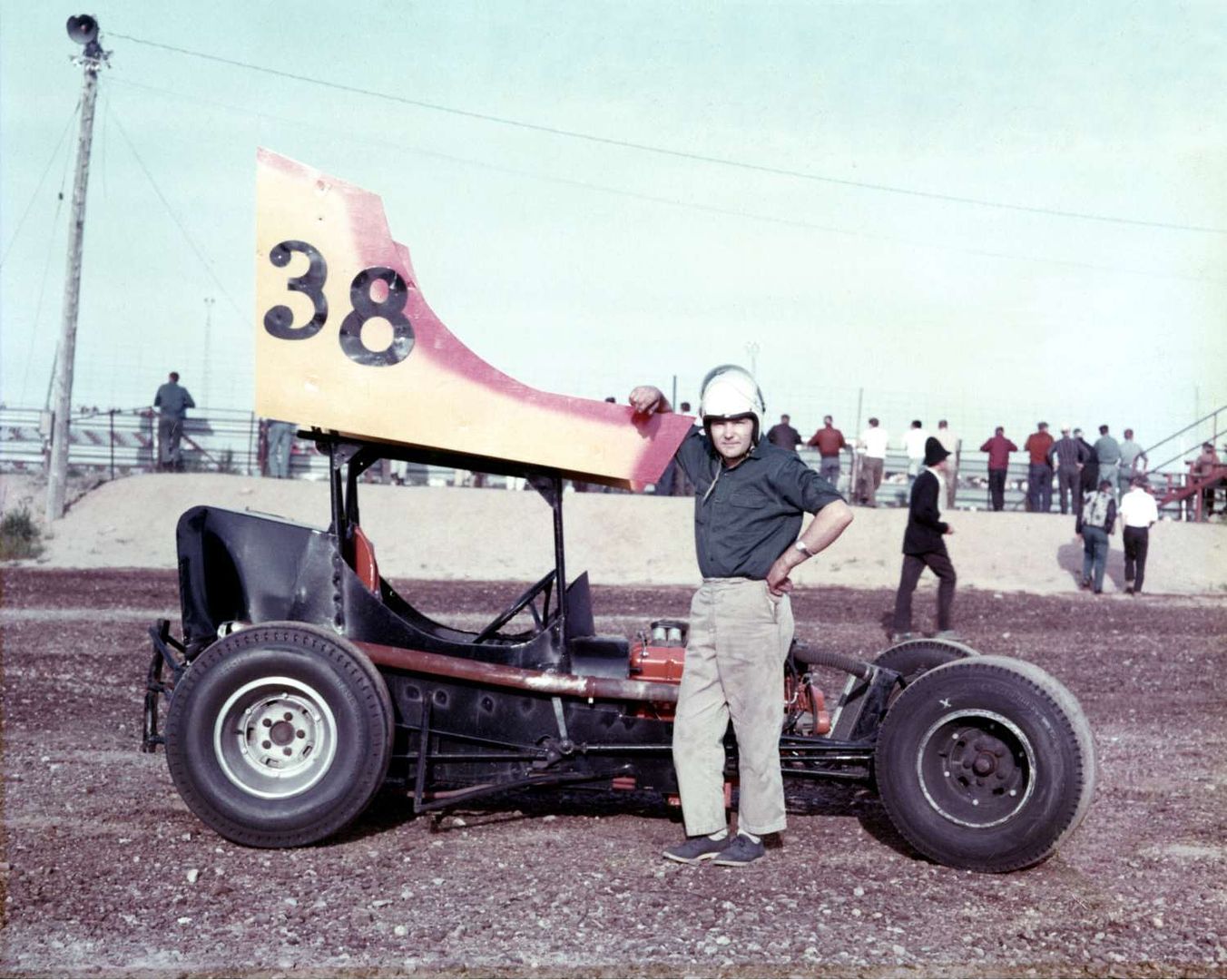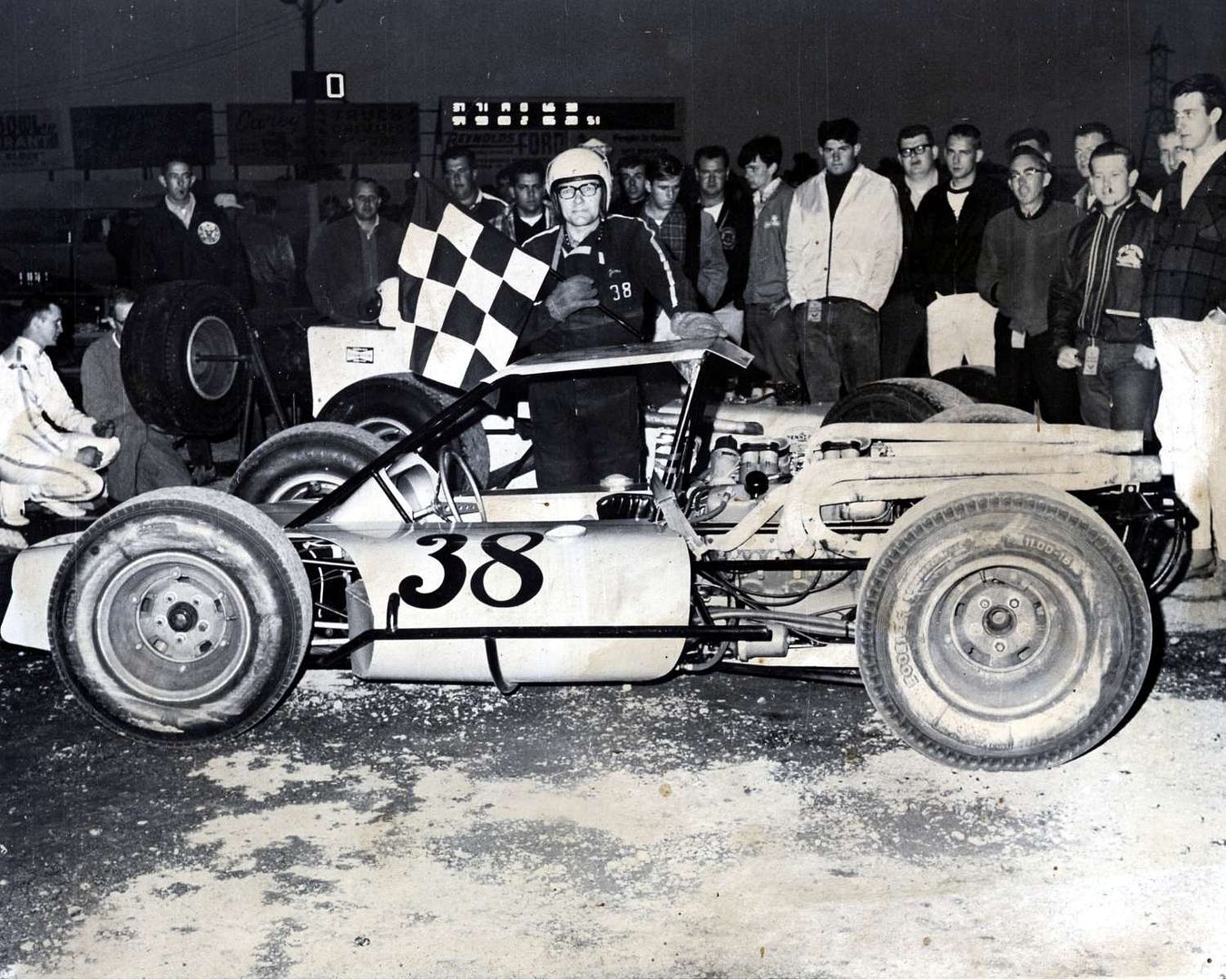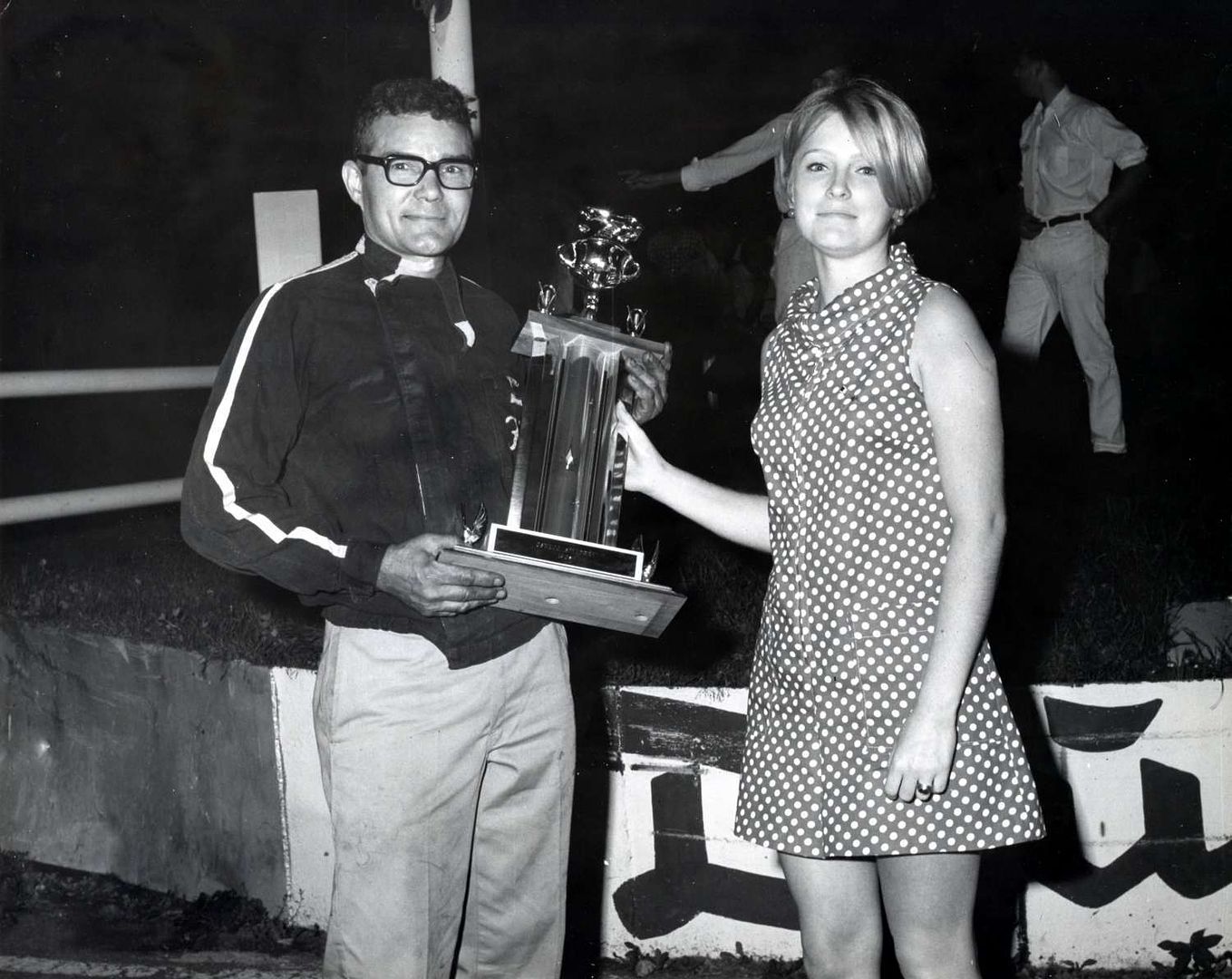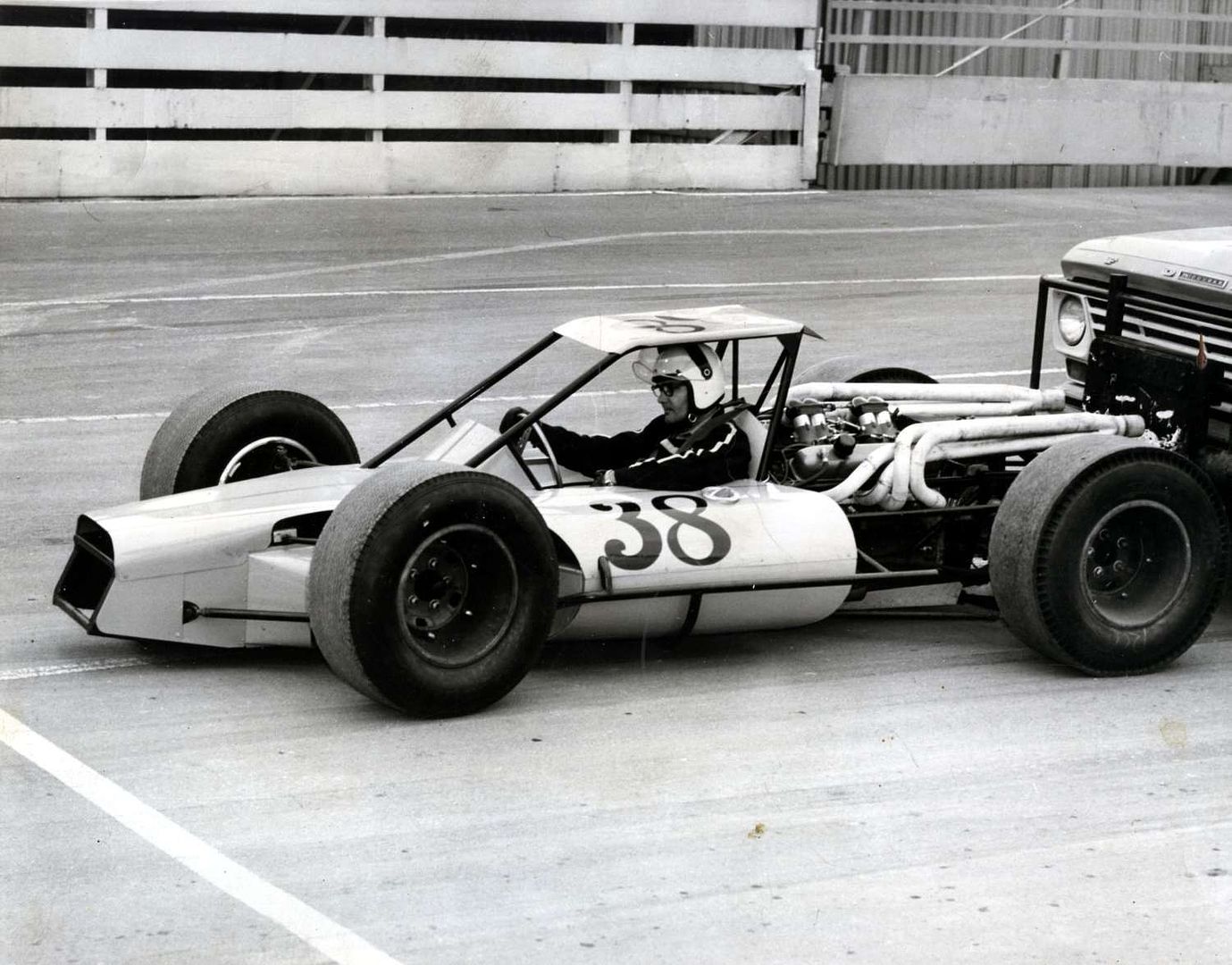Posted with permission from the Hamilton Spectator
________________________________________________
June 05, 2010
Jon Wells
The Hamilton Spectator
Slideshow: Hamilton's stock-car king
There is a typical variety store in a typical strip mall on a nondescript patch of urbania in the east end. And on occasion a man who works the counter watches a bland minivan pull up, sees a little old guy get out and dart into the store to buy cigars.
The little guy doesn't hear so well, is bent over a bit when he walks; it's the arthritis, but he's also strong, agile. And his face, remarkably, has barely a wrinkle. How old is he? Maybe, what, in his 70s?
He is not in his 70s. In fact, he is living in his 92nd spring. And so the smooth face and nimble movements, together with a devotion to daily cigars and a dash of whiskey, do not merely wink at Mother Nature, they are more like a kick in the groin of Father Time.
The man behind the counter has no idea the little guy exiting with a box of cigars under his arm is a true original, and an endangered species. Or, that perhaps the guy doesn't hear too well because his ears ring with the distant roar of 354-inch V8 Hemi Chryslers he built with his bare hands long ago.
The little guy's name? Back in the day there were many: Gentleman Jim. The Professor. Sonny Plym (as in Plymouth). The People's Choice. Jesse James.
Jesse James? "I don't even remember that one," the legend says, chuckling deeply, his teeth clamped on a stogie.
Years ago, the name that most people called him was just Jimmy. But you see, some guys don't play by the same rules as others, never drop the "y" in their lives, ever.
And so today, even to his family, at 91 years old, he's still just Jimmy: Jimmy Howard, number 38.
It is cavelike inside the garage, dark, the air cool, smelling like damp concrete. It feels like your granddad's garage, except it is unlike any garage you've ever been in.
Jimmy Howard's old house is on the lake side of Beach Boulevard. His little unfenced back yard is just a few steps from the beachfront trail. Cyclists and walkers pass daily but Jimmy rarely pauses to watch. The garage -- Jimmy calls it his shop -- sits in the front yard, appropriately enough, because this is where he has spent most of his time over the years. His father, Roy James Howard, a bricklayer, built the garage with Jimmy 50 years ago, laying the concrete block by block.
It is packed with tools and machines and homemade gadgets, like an automatic window blind and a double-barrel wood-fired heating contraption, what Jimmy calls a Winnipeg barn warmer.
"It works, too, when I get wood for it. But I think the son of a gun next door has been taking some of my wood."
He knows people think it all just looks like junk. But it is orderly chaos, and everything works, even the cobwebbed ceiling fan.
"Everything here has a purpose. It's organized to me."
There is little evidence of his racing exploits; one trophy, a dusty sign that says Flamboro Speedway Stock Car Racing Every Saturday night 8 p.m. One wall shelf is neatly packed with old cigar boxes, labelled and filled with springs, nozzle filters, o-rings, spark plugs. The shelf is a monument to both Jimmy's meticulousness and his near lifetime devotion to stogies.
In the shop Jimmy lingers, fixes, fiddles, invents. His eyes aren't quite what they once were, he has a hard time reading some of his instruments, such as tiny markings on a small metal tool that even healthy eyes strain to see.
"I can't remember what you call this damn thing," he growls.
"A micrometer?" offers his son-in-law, Ron.
"Same as a micrometer," Jimmy says, reaching for the right term, flustered. "But that's not the name."
Jimmy broods a bit on the question then sits on a chair padded with a pillow on top of a torn foam cushion, and fires up a cigar that keeps burning out on him. He's wearing navy work pants and workshirt, a ball cap.
"So what's new up in the city today?" Jimmy asks.
He is from an era when the beach strip was not part of Hamilton but something of an outback, far removed from the big city. And it was on the beach where Jimmy built his legend, literally.
Take your pick of historical milestones, but Jimmy Howard took his first peek at the world a long, long time ago; the same year that women were granted the vote in the U.S., a few years before the television was invented. He was born Dec. 15, 1920, in his parents' house on the beach strip. Back then, like many babies on the beach, he was delivered at home -- on the kitchen table, his mother used to say.
That true, Jimmy?
He often delays when asked a question, as though he hasn't heard, before replying with a dry zinger. "Probably," he says. Long pause. "But I don't remember much about it."
He attended Beach Bungalow School on the lake, the building that six decades down the road would be the home to Baranga's restaurant. He and his friends made soapbox-type racers, basically roller skates strapped on two-by-fours, and rode on the boulevard. There was little car racing to speak of in Canada back then, but Jimmy read magazine articles about a racing pioneer who had been popular in the U.S. named Barney Oldfield, and dreamt of one day getting behind the wheel and going fast himself.
When he was about 12 or 13, Jimmy's dad had a beat-down Model-T. It was not too long after Ford had ceased production of the iconic car. His dad's was dead, gathering dust in the yard, so young Jimmy took a crack at it on his own, tinkering, learning. Eventually the boy got it running again, before he could even drive it. He had discovered his love, and his future.
"When I was 16, I went up to get a driver's licence and the guy doing the testing said, 'I'm not going anyplace in that!'"
Jimmy's mechanical skills were entirely self taught. He read car magazines and manuals but that was about it. Back in the day mechanics wouldn't reveal their secrets to you. He kept right on tooling away on cars and as a young man found work at garages among other odd jobs -- construction, ditch digging, welding. Got paid about 10 cents an hour, if that. Used to walk two hours to work from the beach up to Nixon's repair shop on John Street.
In 1941, at 21, he married Annette, a woman he met at the Blue Haven dance hall in Stoney Creek. They would have three kids: Sue, Bobby (Butch) and Gary. Jimmy got a job working on cars at McLeod Motors, and cast an eye toward getting behind the wheel himself in the area's very young racing scene. He also started smoking cigars.
The family had a house in Stoney Creek for a time, moved around a bit, but when Jimmy decided to get into racing with both feet in the late 40s, he sold his house so he could buy a car, a '36 Plymouth Coupe, and moved the family into his parents' place on the beach.
He transformed the coupe into a race car in the back yard, working on it at night under a light hanging from a clothesline.
By 1950 Jimmy had souped up his car, painted number 38 on the side, his colour scheme Ticat black and yellow, the same colours Jimmy would drive for the rest of his career. He made his debut that year on the dirt track at Ancaster Fair Grounds, racing 20 laps on the quarter-mile oval before about 5,000 fans on a decent night.
This is where Jimmy Howard's legend grew. He won lots of races, but did it in style, the lasting image fans had was of Jimmy chomping on his cigar as he drove through dust storms en route to the finish line. In dirt track racing dust swirled, rocks flew, sometimes it got so hard to see he stuck his head out the window to navigate.
"An American driver once told me that if you can't see, don't look forward, just look up in the air and follow the lights around the track."
He raced every night all summer, bouncing from Ancaster to tracks in Brantford (Mohawk Speedway), Flamboro, Nilestown and Delaware. On a good track, he could push the car up around 100 miles an hour (160 km/h). He made between $30-$60 a race in the early days, depending on the number of tickets sold that night; there was no guaranteed purse.
By 1955, thanks to his winnings, Jimmy had moved his family into their own house on the beach, but not before he built another race car in the basement of his parents' place. He had to remove the staircase to get the finished model outside.
(Con't)

________________________________________________
June 05, 2010
Jon Wells
The Hamilton Spectator
Slideshow: Hamilton's stock-car king
There is a typical variety store in a typical strip mall on a nondescript patch of urbania in the east end. And on occasion a man who works the counter watches a bland minivan pull up, sees a little old guy get out and dart into the store to buy cigars.
The little guy doesn't hear so well, is bent over a bit when he walks; it's the arthritis, but he's also strong, agile. And his face, remarkably, has barely a wrinkle. How old is he? Maybe, what, in his 70s?
He is not in his 70s. In fact, he is living in his 92nd spring. And so the smooth face and nimble movements, together with a devotion to daily cigars and a dash of whiskey, do not merely wink at Mother Nature, they are more like a kick in the groin of Father Time.
The man behind the counter has no idea the little guy exiting with a box of cigars under his arm is a true original, and an endangered species. Or, that perhaps the guy doesn't hear too well because his ears ring with the distant roar of 354-inch V8 Hemi Chryslers he built with his bare hands long ago.
The little guy's name? Back in the day there were many: Gentleman Jim. The Professor. Sonny Plym (as in Plymouth). The People's Choice. Jesse James.
Jesse James? "I don't even remember that one," the legend says, chuckling deeply, his teeth clamped on a stogie.
Years ago, the name that most people called him was just Jimmy. But you see, some guys don't play by the same rules as others, never drop the "y" in their lives, ever.
And so today, even to his family, at 91 years old, he's still just Jimmy: Jimmy Howard, number 38.
It is cavelike inside the garage, dark, the air cool, smelling like damp concrete. It feels like your granddad's garage, except it is unlike any garage you've ever been in.
Jimmy Howard's old house is on the lake side of Beach Boulevard. His little unfenced back yard is just a few steps from the beachfront trail. Cyclists and walkers pass daily but Jimmy rarely pauses to watch. The garage -- Jimmy calls it his shop -- sits in the front yard, appropriately enough, because this is where he has spent most of his time over the years. His father, Roy James Howard, a bricklayer, built the garage with Jimmy 50 years ago, laying the concrete block by block.
It is packed with tools and machines and homemade gadgets, like an automatic window blind and a double-barrel wood-fired heating contraption, what Jimmy calls a Winnipeg barn warmer.
"It works, too, when I get wood for it. But I think the son of a gun next door has been taking some of my wood."
He knows people think it all just looks like junk. But it is orderly chaos, and everything works, even the cobwebbed ceiling fan.
"Everything here has a purpose. It's organized to me."
There is little evidence of his racing exploits; one trophy, a dusty sign that says Flamboro Speedway Stock Car Racing Every Saturday night 8 p.m. One wall shelf is neatly packed with old cigar boxes, labelled and filled with springs, nozzle filters, o-rings, spark plugs. The shelf is a monument to both Jimmy's meticulousness and his near lifetime devotion to stogies.
In the shop Jimmy lingers, fixes, fiddles, invents. His eyes aren't quite what they once were, he has a hard time reading some of his instruments, such as tiny markings on a small metal tool that even healthy eyes strain to see.
"I can't remember what you call this damn thing," he growls.
"A micrometer?" offers his son-in-law, Ron.
"Same as a micrometer," Jimmy says, reaching for the right term, flustered. "But that's not the name."
Jimmy broods a bit on the question then sits on a chair padded with a pillow on top of a torn foam cushion, and fires up a cigar that keeps burning out on him. He's wearing navy work pants and workshirt, a ball cap.
"So what's new up in the city today?" Jimmy asks.
He is from an era when the beach strip was not part of Hamilton but something of an outback, far removed from the big city. And it was on the beach where Jimmy built his legend, literally.
Take your pick of historical milestones, but Jimmy Howard took his first peek at the world a long, long time ago; the same year that women were granted the vote in the U.S., a few years before the television was invented. He was born Dec. 15, 1920, in his parents' house on the beach strip. Back then, like many babies on the beach, he was delivered at home -- on the kitchen table, his mother used to say.
That true, Jimmy?
He often delays when asked a question, as though he hasn't heard, before replying with a dry zinger. "Probably," he says. Long pause. "But I don't remember much about it."
He attended Beach Bungalow School on the lake, the building that six decades down the road would be the home to Baranga's restaurant. He and his friends made soapbox-type racers, basically roller skates strapped on two-by-fours, and rode on the boulevard. There was little car racing to speak of in Canada back then, but Jimmy read magazine articles about a racing pioneer who had been popular in the U.S. named Barney Oldfield, and dreamt of one day getting behind the wheel and going fast himself.
When he was about 12 or 13, Jimmy's dad had a beat-down Model-T. It was not too long after Ford had ceased production of the iconic car. His dad's was dead, gathering dust in the yard, so young Jimmy took a crack at it on his own, tinkering, learning. Eventually the boy got it running again, before he could even drive it. He had discovered his love, and his future.
"When I was 16, I went up to get a driver's licence and the guy doing the testing said, 'I'm not going anyplace in that!'"
Jimmy's mechanical skills were entirely self taught. He read car magazines and manuals but that was about it. Back in the day mechanics wouldn't reveal their secrets to you. He kept right on tooling away on cars and as a young man found work at garages among other odd jobs -- construction, ditch digging, welding. Got paid about 10 cents an hour, if that. Used to walk two hours to work from the beach up to Nixon's repair shop on John Street.
In 1941, at 21, he married Annette, a woman he met at the Blue Haven dance hall in Stoney Creek. They would have three kids: Sue, Bobby (Butch) and Gary. Jimmy got a job working on cars at McLeod Motors, and cast an eye toward getting behind the wheel himself in the area's very young racing scene. He also started smoking cigars.
The family had a house in Stoney Creek for a time, moved around a bit, but when Jimmy decided to get into racing with both feet in the late 40s, he sold his house so he could buy a car, a '36 Plymouth Coupe, and moved the family into his parents' place on the beach.
He transformed the coupe into a race car in the back yard, working on it at night under a light hanging from a clothesline.
By 1950 Jimmy had souped up his car, painted number 38 on the side, his colour scheme Ticat black and yellow, the same colours Jimmy would drive for the rest of his career. He made his debut that year on the dirt track at Ancaster Fair Grounds, racing 20 laps on the quarter-mile oval before about 5,000 fans on a decent night.
This is where Jimmy Howard's legend grew. He won lots of races, but did it in style, the lasting image fans had was of Jimmy chomping on his cigar as he drove through dust storms en route to the finish line. In dirt track racing dust swirled, rocks flew, sometimes it got so hard to see he stuck his head out the window to navigate.
"An American driver once told me that if you can't see, don't look forward, just look up in the air and follow the lights around the track."
He raced every night all summer, bouncing from Ancaster to tracks in Brantford (Mohawk Speedway), Flamboro, Nilestown and Delaware. On a good track, he could push the car up around 100 miles an hour (160 km/h). He made between $30-$60 a race in the early days, depending on the number of tickets sold that night; there was no guaranteed purse.
By 1955, thanks to his winnings, Jimmy had moved his family into their own house on the beach, but not before he built another race car in the basement of his parents' place. He had to remove the staircase to get the finished model outside.
(Con't)



